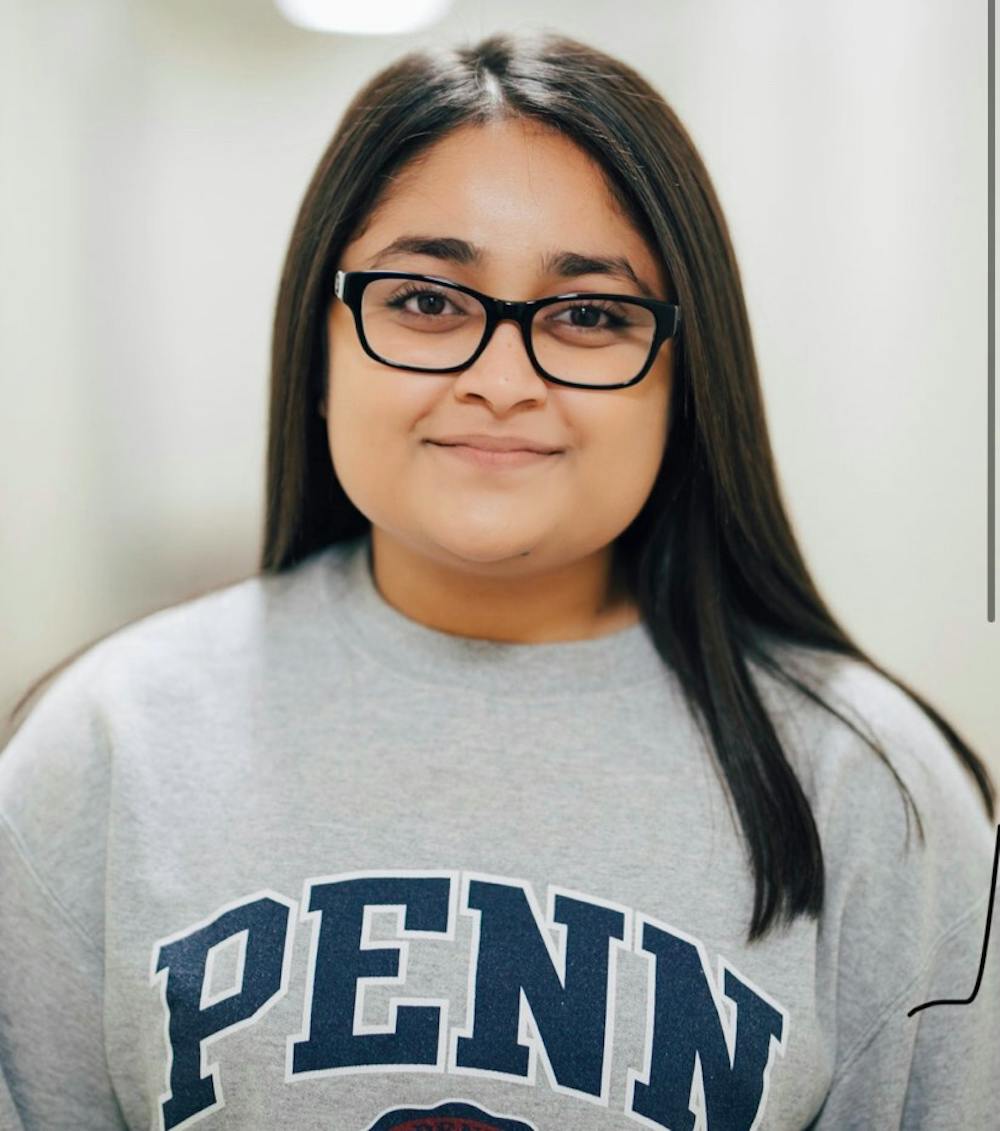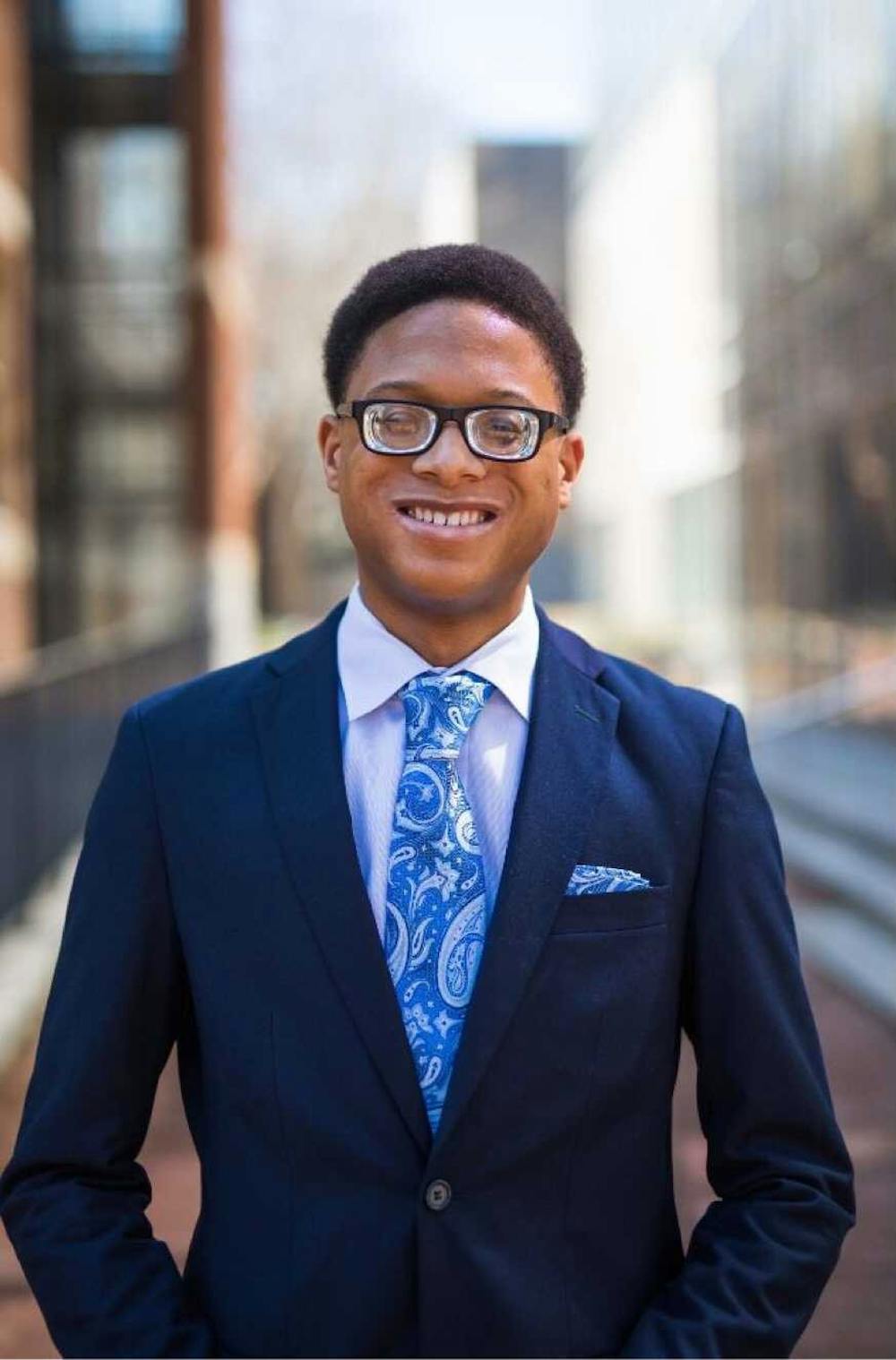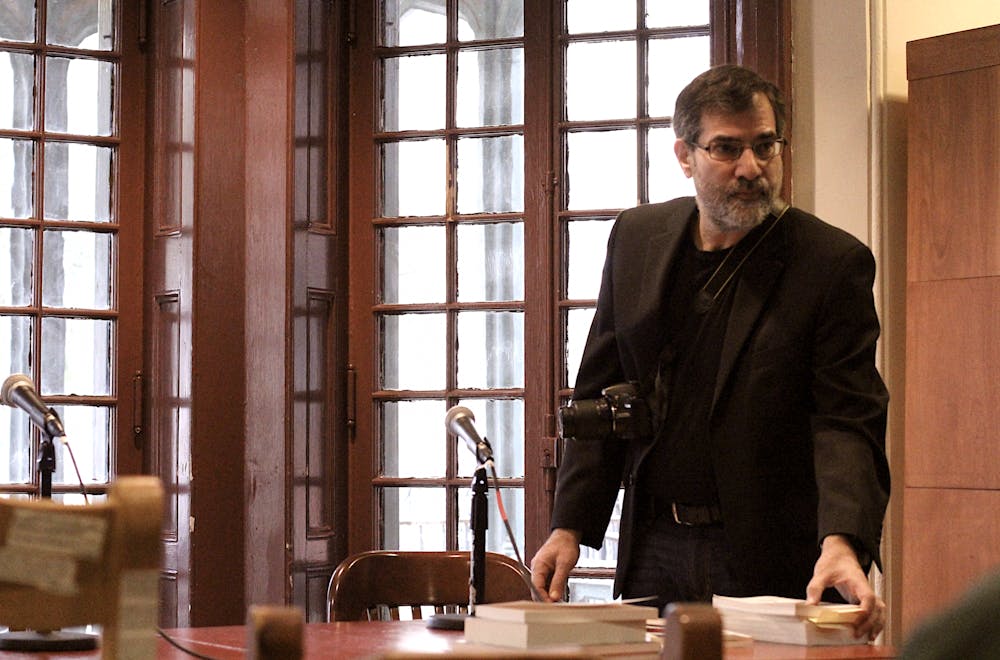Annabelle Noyes (W '24) doesn’t feel like a Penn student. Spending her first semester of college completing online courses from her childhood home in Wisconsin, she felt the pressure of the virtual setting. She worked on assignments with classmates she’d never met before, struggled to connect with professors, and fumbled with Zoom.
Even though she wouldn’t meet anyone in person for the first five months of college, she had “to look nice to these people,” she thought, “because [they were] prospective friends.”
Moving to campus for the spring semester helped, but she still didn’t feel totally connected to the University. Even though a semester of life at Penn has given Annabelle some semblance of normalcy, she looks forward to the prospect of in–person classes in the fall.
“I’m finally going to feel like a Penn student,” she says.
Over a year after the onset of online learning, members of the Penn community are familiar with the monotony, exhaustion, and feelings of isolation that have stemmed from the pandemic. These feelings have only been exacerbated by the challenges of taking on school or work from home—Zoom, eat, sleep, repeat.
But there have also been some hidden benefits. Many students find it easier to perform well on some assignments, like open–note exams. And, for some students with disabilities, Zoom has increased accessibility to what many felt was a previously inaccessible learning environment.
This year, professors have redefined what it means to be in the classroom, and students have redefined what it means to learn. Many hope that new resources utilized in online learning, such as pre–recorded lectures, are here to stay, which may permanently change in–person education.
Both Annabelle and Xavier Shankle (W '24) took five classes this past semester, a combination of synchronous and asynchronous lessons. Xavier was enrolled in one fully asynchronous course, which he says was “a very isolating class experience.”

“It kind of became less of, ‘I want to learn about psychology,’ and now it’s just, ‘I want to get these lectures out of the way,’ because there’s no real element of discussion. It’s a tough space to navigate there,” he says.
Annabelle and Xavier both point out that many courses required live Zoom sessions on top of pre–recorded lectures, effectively doubling the normal amount of work, as the lecture videos were the length of the entire class time themselves. Annabelle adds that it was also easier to become distracted watching recorded lectures. “You have to be very self–disciplined to thrive in this environment,” she says. For many students, mastering this skill is difficult.
“This Zoom cloud that’s over all of us, that little bit of negativity about this whole situation, kind of puts [up] an implicit barrier with regards to learning,” Annabelle says.
Xavier also implores professors to be more aware and accommodating of the role socioeconomic status plays in the classroom.
“Your academic performance is not just about what happens in the classroom, especially in the online world. Now, it's about what happens at home: Do you have a computer? Do you have steady internet? What timezone are you in?” he explains. “There's a multitude of other factors that now impact the classroom experience.”
The difficulties of Zoom learning extended to professors too, who struggled to connect with and teach students over the three semesters of online school.
For Michelle Taransky, lecturer in Critical Writing, one of the most difficult challenges was figuring out a way to take those external factors into account in the classroom.
“One of my biggest struggles was video policies and what sorts of expectations were equitable and fair in a pandemic,” she says. “I don't know that I've figured that out. I am still beautifully and wonderfully confused about the best way to teach synchronously to students that are burnt out, and languishing, and sad.”
For students with disabilities, remote education has exacerbated many of these same challenges to an even more intense degree. Aaron Spector, director of Student Disability Services (SDS) at the Weingarten Learning Resources Center, says that SDS has seen an uptick in accommodation requests with online learning. He says that many students who knew they had a disability or other condition, but did not use accommodations previously, reached out to SDS with new challenges posed by the remote environment. He adds that the increase in screen time has been particularly difficult for students with concussions, brain injuries, migraines, or other light and screen sensitivities.
Another challenge is the accessibility of online lectures—or lack thereof. Kruti Desai (C '23), co–founder of Disability Advocacy @ Penn, calls on professors to enable closed captioning on lecture videos and live Zoom calls, a feature now available to all University–affiliated Zoom accounts.
“We have a few members [of Disability Advocacy @ Penn] who are hearing impaired, and their lectures would not have closed captioning on them, which was incredibly difficult,” she says.
Spector echoes this. “It’s always good practice to enable the captions on your Zoom meeting, which is something that is available across the Penn community now,” he says. The heavy reliance on technology due to the pandemic has spread awareness around closed–caption use online, not only on lecture videos or academic meetings, but also on social media platforms such as TikTok or Instagram Reels.

Kruti Desai – Photo courtesy of Kruti Desai
Kruti, who has a physical disability, also notes that the online disconnect in professor–student relationships makes it more difficult to communicate her needs with her professors.
“You can’t actually see the lower half of my body [on Zoom]. It’s hard to gauge the severity of disabilities over Zoom and for professors to truly understand what is needed,” she adds.
Despite its drawbacks, students like Kruti have also seen online learning as an equalizer in many ways, solving some of the problems that occur in the physical classroom. Kruti explains that online platforms are “super accessible,” because they have the ability to enable closed–captioning, to record, and don’t require students with physical disabilities to worry about the accessibility of the building in which their classes or club activities meet.
While PennAccess provides detailed maps of accessible features around campus, many buildings still lack wheelchair–accessible entrances. Others are not equally accessible, meaning that the accessible entrance is a secondary or rear entrance. For students like Kruti, this provides an issue in normal times when trying to get to class.
Xavier also feels that Zoom has leveled the playing field between students and professors.
“There's a completely new power dynamic within classes. So instead of a professor being behind a podium or behind a lectern and in front of the class and having all the attention on [them], now everybody gets one box on Zoom,” he says. “Everybody's almost humanized; everybody’s equalized.”
Al Filreis, faculty director of Kelly Writers House, echoes that sentiment. “All the boxes are all the same size. I can see all my students right there. Strangely, there is an intimacy about that,” he says.
While many faculty members faced difficulties adjusting specific courses to be conducive to the remote environment, the transition was natural for Filreis and the Writers House.
Filreis has been teaching online since 1990, and he's led "Modern & Contemporary American Poetry" (or “ModPo”)—a course that is, by definition, entirely virtual—since 2012 on Coursera. He told The Philadelphia Inquirer’s Sunday magazine in 2001 that he uses technology to “free class time for discussion” and shift away from lecture–based learning.
Consequently, Filreis feels completely confident in the power of online teaching.
“I was already convinced that this was not hard, that creating online community is possible—entirely possible,” he says. “I know that it can be done well, and I know that people in different time zones and different places and different circumstances can come together. [I] never doubted that for a second.”
Looking forward, both Xavier and Annabelle feel that professors should continue to record lectures after the transition back to in–person learning, even if the lectures are delivered in person. The recordings allow students to absorb the material on their own schedule, at their own pace, Annabelle says.
“You can watch recorded lectures whenever you want, at whatever speed you want, assuming that the professor records them. I think that's something that I hope would stay,” Xavier adds.

Kruti also hopes that professors will maintain recorded lectures and online office hours.
And professors plan to.
Filreis has always felt that there’s no place for lectures in a live classroom.
“Lecture classes have tended to be more asynchronous [online], which is what it should have been like all along,” he says. “I believe that in–class teaching has gotten stale, particularly lectures. They’re awful. Lectures are not the best way for people to learn. Having a classroom has meant that a lot of teachers just default into the lecture mode, and even though students are sitting there trying to pay attention, many of them are not learning in lecture.”
Filreis hopes that online learning will mark a shift away from lecture–heavy courses.
“When we go back to in–person teaching, [I hope that] we’ll take better advantage of the rare opportunity that we have when we’re in the room not to just lecture, but to actually find out what people are learning, what they’re thinking, or what they’re feeling,” he says. “I’ve never doubted that any fixed materials, any materials that do not point to discussion, should not be part of the in–person classes.”
Bill Ashmanskas, a senior lecturer in Physics, agrees.
“The time we get to spend together in a classroom is really a precious resource,” he says. “This ability to record lectures for increased viewing lets us use classroom time in a more interactive way.” He also feels more spontaneous when delivering recorded lectures because he knows he can hit the pause button. “I feel a little bit more free."
Ashmanskas teaches using a lightboard, a clear screen in front of him on which he can draw diagrams, solve problems, and make notes.
If recorded lectures do become commonplace, though, he wonders if there’s a way to make the experience of watching lectures less passive. He adds that it could be possible for students to watch the asynchronous videos with a friend.
In addition to academic struggles that have come to light during quarantine, Filreis hopes that the pandemic will serve as a wake–up call regarding the issue of student mental health. He believes that students are pushed too hard—and not just during online learning.
“We should stop expecting quite so much from our students. We need to ease off. And I don’t mean just because of the pandemic,” Filreis says. “Just generally, we’re trying to get our students to do too much. There’s too much coverage. We ought to just take about a third of the syllabus and cut it out.”
He remembers how, in a normal fall semester, almost everyone had a viral cold or the flu by November because they were so exhausted.
“We all have this idea: We need to push these kids hard. Push them, push them, push them. ‘You have to read this book by next Monday.’ Why? Wouldn't it be better if we spent two weeks on that book instead of one week, and we have much more leisure to talk about it? What’s the point of pushing everybody so hard?” he asks. “What’s the point of driving students to be sick?”

Filreis, Ashmanskas, and Taransky also all highlight the new modes of communication that have become mainstream during remote schooling.
Ashmanskas uses Slack to engage in discussions with students outside of class time. He feels the conversation is more relaxed.
“A bit of a back and forth is more natural with direct messages than with email,” he says. “I wouldn't have thought that it would be possible to do that, but it turned out to work reasonably well.”
Filreis and Taransky both look to Zoom’s chat function as a new avenue for discussion in the classroom.
“In my classes, [using the] chat is a form of respect. It means somebody’s got something to say,” Filreis explains. “Let’s say one of the students has just said something brilliant and powerful. It’s a little hard to interrupt and say, ‘That was brilliant and powerful,’ for the students. But the chat enables people to commend each other.”
Taransky says that the chat feature allows students who may be more hesitant to raise their hand in class to share their thoughts, and she hopes to find a way to integrate the mechanism into her in–person teaching.
“[The] chat has been the most exciting part for me, and [it’s] something that I want to think about how to maintain in the classroom,” she says. “Maybe it's like projecting a Twitter feed behind me that students can post to.”
Filreis urges Penn and other universities to continue producing and sharing online content after the transition back to in–person learning, in order to reach a wider audience.
“Nobody ever said, ‘Gee, let’s do a television program, and let’s make sure only people locally get to watch it,” he explains. “But yet universities have assumed that all along. We have all this really interesting stuff going on, but you have to be local to participate.”
The future of learning hinges on the takeaways from this past year of online instruction. Given the steady decrease in COVID–19 cases and increase in vaccinations, Penn currently plans to expand in–person learning for the fall 2021 semester. While it’s unclear if these trends will continue, or what each fall course will look like, the lessons and insights gained from virtual education have been critical in assessing what to take forward with us, and what to leave behind.
Online learning has put the adaptability of students and faculty to a grueling test. It's caused headaches, eye pain, and record sales of blue–light glasses. It's generated feelings of isolation and a lack of motivation. But it’s also brought to light resources that had never been considered a possibility before. It's revolutionized the span of activities now at our fingertips from our very own bedrooms. It’s increased the range of people we can reach, with students and faculty joining meetings from all pockets of the world. It’s true that in–person learning may never be the same—but maybe that’s for the better.
